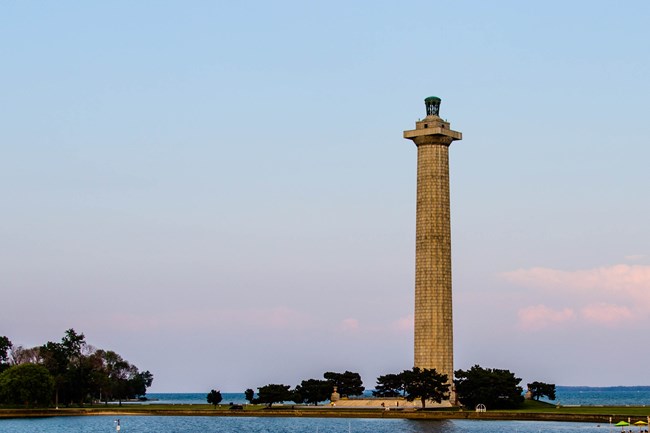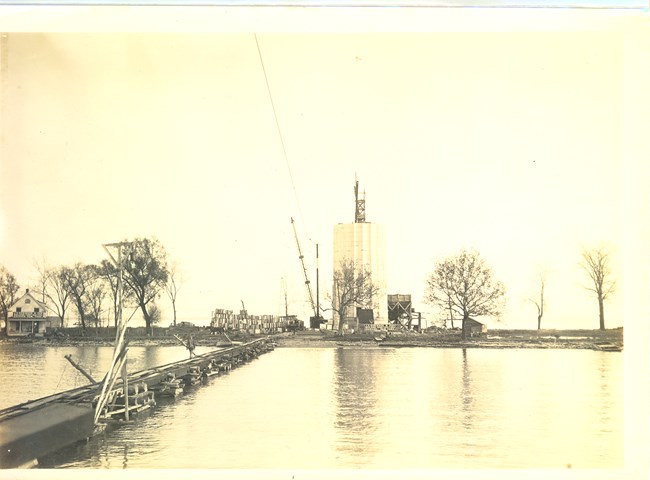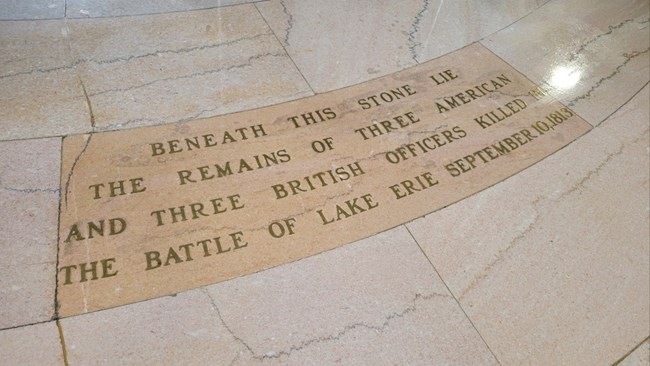
A Symbol of Victory and PeacePerry’s Victory and International Peace Memorial was an engineering marvel of its time and an architectural statement. Surrounded by 25 acres of landscaped grounds this national memorial was established to honor Commodore Oliver Hazard Perry's victory in the Battle of Lake Erie. Of equal significance, the Memorial serves as a symbol of international peace and a constant reminder of the ongoing cooperation between former enemies, Great Britain, Canada, and the United States. 
NPS Photo archive, photographer Otto G Herbster Design and Preparations for Construction

NPS Photo Allison Dawson The Reinterment"At the close of the combat in the battle of Lake Erie on September 10, 1813, the slain enlisted personnel of both fleets were committed to the waters of Lake Erie. On September 11, the crews of both fleets joined in a common ceremony in which the remains of six officers, three American and three British, who died in combat were interred a few yards from the lake side on South Bass Island." [copied from A Construction History of the Perry's Victory and International Peace Memorial, Prepared by Alfred Mongin, 1961]On September 11, 1913 a casket bearing the six officers was ceremoniously raised from the gravesite near the shore and placed in an ornate catafalque. With military escorts, clergy, dignitaries and guests of honor a procession moved towards the Memorial. Upon completion of the Memorial, a marble slab with a tribute inscribed in bronze was set in the marble rotunda floor above the location of the casket. Along with the bronze marker, the limestone rotunda walls are engraved with the names of the sailors and soldiers who perished or were maimed during the Battle of Lake Erie. Special FeaturesUpon seeing the height of the column it is instinctive to look up and wonder about the view from the top, sometimes bypassing the Memorial's significance, the entombed officers and the on-going peace that it represents. Nevertheless, it is a colossal homage to Perry's victory that includes architectural features inside and out that offer visitors moments of reflection on the battle, the bravery, and the longest peaceful border between nations in the world.
Bronze TabletsPlaced at each rotunda entrance are cast bronze tablets. The first four installed for the dedication measure 28 in by 50 1/4 in. These are: The Treaty or Peace Tablet, The Wilson Tablet, The Taft Tablet, and The Waterson Tablet. Two more were added shortly after the dedication and the final two smaller tablets, one signed by President John F. Kennedy, were hung in 1963. Click this link for the text on each of the bronze tablets.Recognizing Those Who FoughtThe hand engraving of the Indiana limestone wall tablets in the rotunda began October 1913 and continued intermittently though February 1915. Each tablet leads by identifying a ship and is followed by the names of the sailors and soldiers who died or were injured during the Battle of Lake Erie. On the elevator floor above the rotunda are bronze plaques which bear the names of many who fought the battle and survived.The Bronze Lantern (Urn)Designed by architect Freedlander, the solid bronze eight-footed, pinnacle structure was cast by the Architectural Bronze Division of the Gorham Company. The lantern was shipped in pieces and reassembled in place. The diameter is 17 ft 4 in (1.2 m). The height is 22.5 ft (6.9 m), and it weighs about 11 tons. |
Last updated: July 26, 2025
